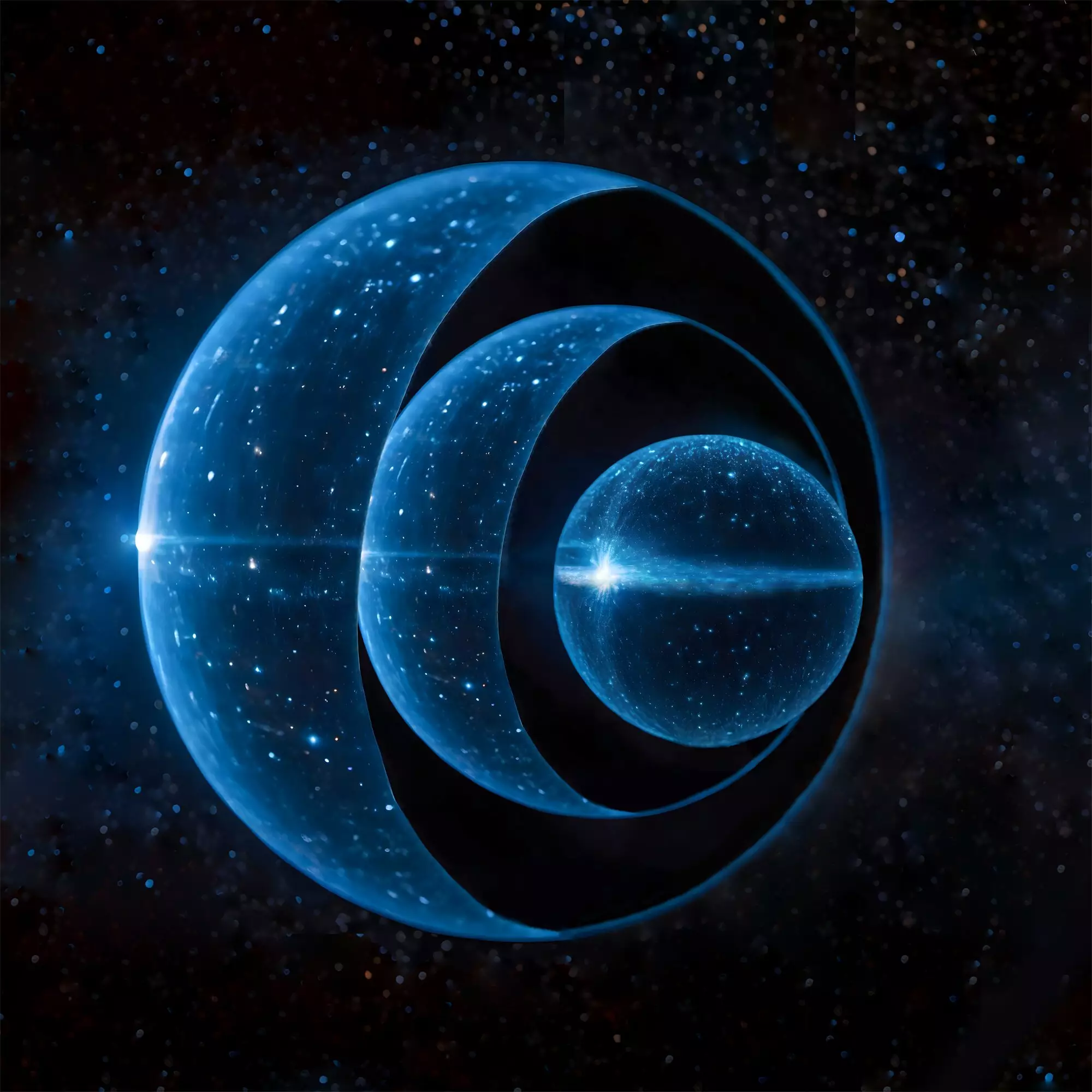The exploration of the interior of black holes remains a never-ending enigma for the scientific community. Since Karl Schwarzschild’s groundbreaking solution to Albert Einstein’s equations of general relativity in 1916, the notion of a singularity at the heart of black holes has perplexed physicists. Schwarzschild’s solution proposed that at the center of a black hole lies a point where space and time cease to exist, rendering all known physical laws, including Einstein’s theory of relativity, ineffective. This poses a significant challenge for scientific inquiry as it implies that no information can escape from a black hole beyond its event horizon. The lack of tangible evidence during that time hindered the attention given to Schwarzschild’s solution until subsequent discoveries in the 1970s and 2000s unveiled the existence of black holes within the universe. The historic capture of the first-ever image of a black hole in 2019 by the Event Horizon Telescope Collaboration further propelled the exploration of these enigmatic entities.
In the realm of theoretical astrophysics, Pawel Mazur and Emil Mottola introduced an alternative solution to Einstein’s field equations in 2001. They coined the term “gravitational condensate stars,” or gravastars, as a plausible alternative to black holes. Gravastars possess several advantages over their black hole counterparts, primarily from a theoretical standpoint. While they share similar compactness and gravitational strength at their surface, gravastars do not exhibit an event horizon, the boundary beyond which no information can escape. Furthermore, the singularity that haunts black holes finds no abode within the core of gravastars. Instead, a massive force exerted by exotic (dark) energy counteracts the immense gravitational pressure, preventing matter from collapsing into a singularity. The surface of a gravastar manifests as a nearly infinitesimal layer of ordinary matter.
In a recent breakthrough, theoretical physicists Daniel Jampolski and Professor Luciano Rezzolla from Goethe University Frankfurt have unraveled yet another astonishing revelation within the fabric of general relativity. Their study, published in the journal Classical and Quantum Gravity, introduces the concept of “nestars,” a nested arrangement of gravastars. Jampolski’s discovery emerged from his Bachelor’s thesis, which received the guidance and supervision of Luciano Rezzolla. This groundbreaking concept compares the nestar to a matryoshka doll, with each gravastar nested within another.
While Mazur and Mottola envisioned gravastars with an infinitely thin shell comprised of normal matter, the nestar’s characteristics differ slightly. Its shell possesses a measurable thickness, making its existence somewhat more conceivable. Rezzolla acknowledged the significance of their discovery, emphasizing that even a century after Schwarzschild’s pioneering work, the exploration of new solutions within Einstein’s field equations remains fruitful. However, the creation of such an intricate celestial object as the gravastar or the nestar remains a mystery that continues to elude researchers.
The quest to comprehend the enigmatic interior of black holes fuels the curiosity and determination of scientists across the globe. The tantalizing prospect of a matryoshka-like arrangement of gravastars pushes the boundaries of theoretical physics, urging researchers to explore uncharted territories. While the theoretical framework of gravastars presents advantages over black holes, their very existence and formation remain an unsolved puzzle. Further investigations, experiments, and theoretical advancements are required to shed light on the birth and intricacies of gravastars and nestars alike. The exploration of these cosmic wonders not only challenges established scientific principles but also offers glimpses into the fundamental nature of our universe. As the golden coin of discovery glimmers along the well-trodden path, scientists strive to unravel the enigma that lies deep within the nestar and its extraordinary cosmic siblings.


Leave a Reply